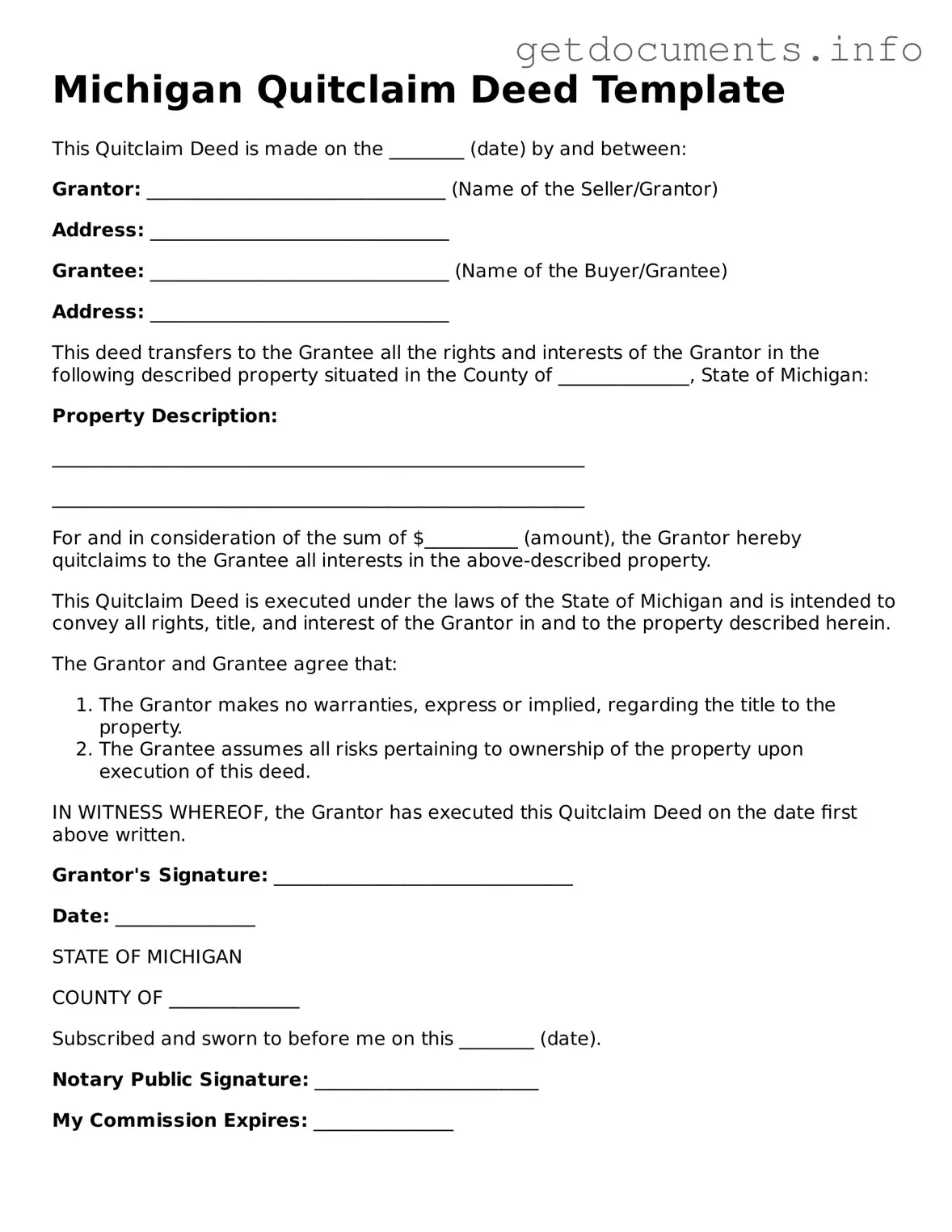The Michigan Quitclaim Deed form serves as a crucial legal instrument for transferring property ownership without the complexities often associated with traditional property deeds. This form allows the granter, or seller, to relinquish any claim they may have to a property, while the grantee, or buyer, receives whatever interest the granter holds, if any. Unlike warranty deeds, which provide guarantees about the title, a quitclaim deed offers no such assurances, making it essential for both parties to understand the implications. The form typically requires basic information, including the names of the parties involved, a legal description of the property, and the signatures of the granter, often in the presence of a notary public. Additionally, this deed is commonly used in situations such as transferring property between family members, clearing up title issues, or during divorce proceedings. Understanding the quitclaim deed's purpose, requirements, and potential risks can help individuals navigate property transactions more effectively in Michigan.
